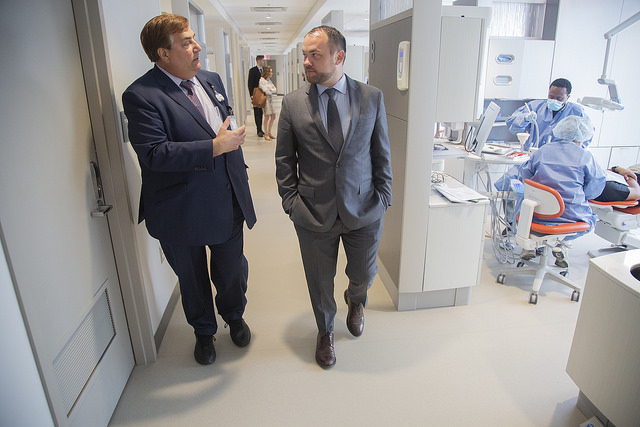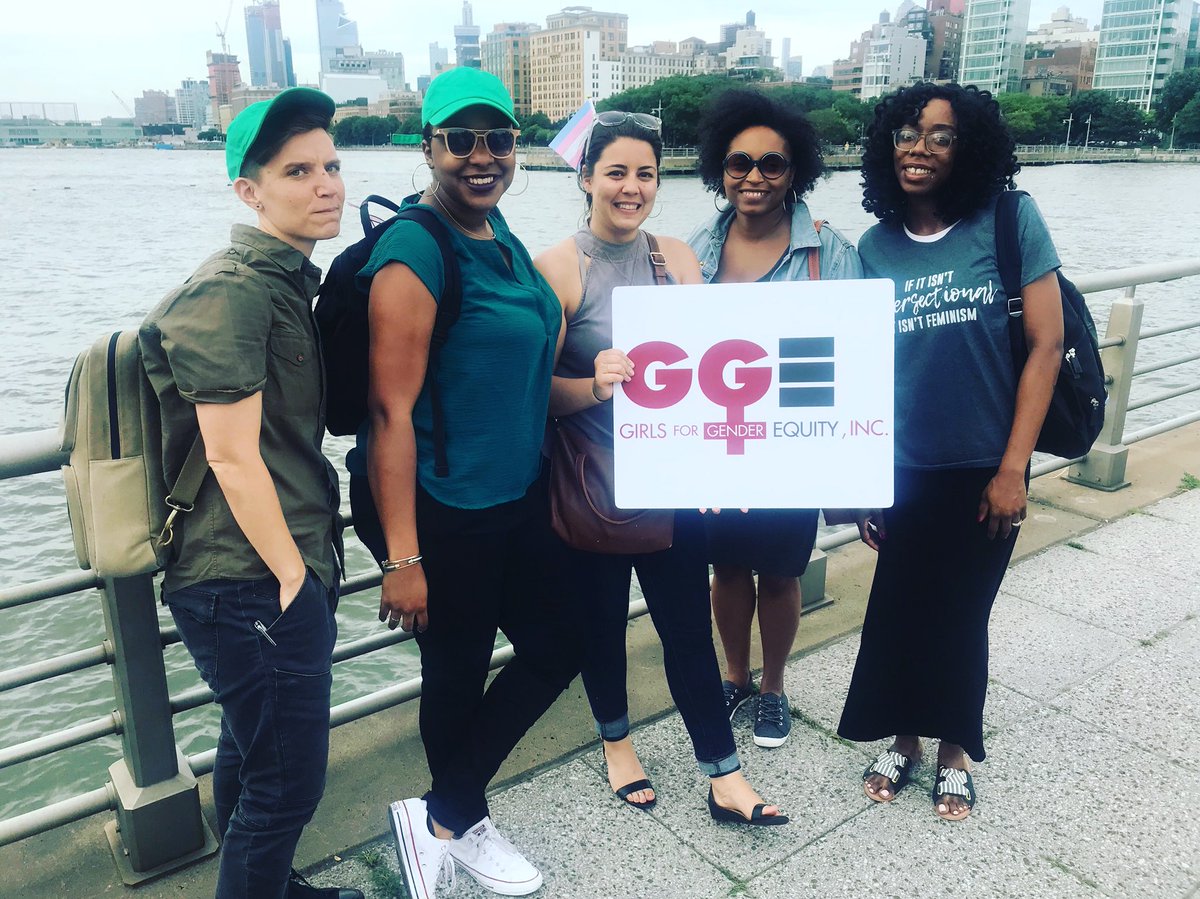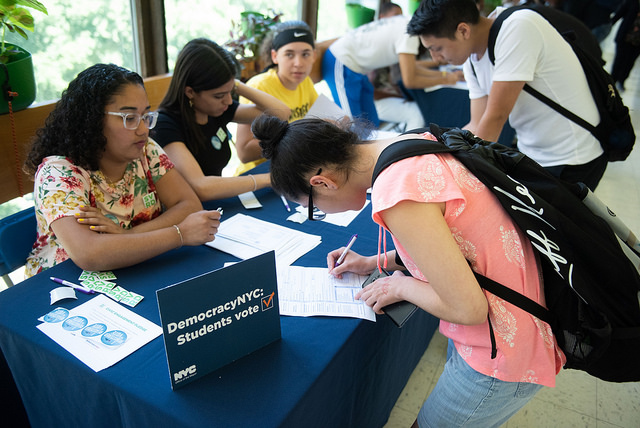Extending the Human Right of Health Care to All New Yorkers

Speaker Johnson, the author, visits a health care facility (photo via John McCarten)
Health care for all is a human right. This means no one should be denied care based on their ability to pay.
The World Health Organization recognized this fundamental truth 70 years ago, most countries around the world have been putting it into action for decades now, and doctors and nurses live it out professionally every day.
Truly achieving this moral imperative means we need a universal health care system supported by taxes and administered by one provider. Not only is this the right thing to do, it’s also more practical and less expensive than the status quo.
A recent study conducted by the RAND Corporation shows that single-payer is likely to save our state health care system $15 billion by 2031 compared to our current system. Other estimates project savings of up to $45 billion.
For these reasons I introduced a resolution Wednesday urging our state government to approve a law that would lay the foundation for single-payer healthcare in the Empire State. The proposal would create the New York Health program, which, if fully implemented, would result in 90 percent of New Yorkers spending less on health care than they currently do.
The plan would help save New Yorkers money by cutting administrative costs and simplifying the present system. Approximately one million New Yorkers are without any health insurance and have essentially been priced out of the market, which is another practical reason why I support this legislation. Also, you, the patient, would pay no premiums, deductibles or co-payments when visiting a doctor under the new system.
According to the RAND study, New Yorkers could spend half as much money out of their own pockets under the New York Health program than they do within the current system. In fact, according to a relatively conservative scenario, New Yorkers with an annual household compensation of less than $105,300 would save about $2,800 per person every year. Other estimates project even greater savings.
Single-payer is traditionally viewed as a progressive cause, but it has earned support from conservative quarters too. RAND, which was originally founded to provide research to the armed forces, isn’t exactly a progressive endeavor.
It is also worth noting that New York is a relatively wealthy state. Our economy is the third largest in the nation, behind California and Texas. And with a gross domestic product of $1.56 trillion, our economy is comparable to Canada’s, which has a $1.65 trillion GDP.
That kind of prosperity is an advantage few states – and few countries, for that matter – enjoy, and it’s one we should leverage so as many New Yorkers as possible have access to good health care. Failing to do so would be an abdication of our responsibility as elected representatives.
The current landscape is complicated and there are a lot of moving parts, but complexity shouldn’t be the enemy of what is right.
President Trump’s administration has signaled it would oppose single-payer plans from state governments seeking to bring sanity to their respective health care landscapes, so it is unlikely his administration will grant New York the federal waivers needed for a single-payer system to be fully implemented here.
However, even without a waiver, the state could still ramp up the program on a partial basis and, in the process, save money for current Medicare and Medicaid recipients through improved, wrap-around coverage. It would also lay the framework for full implementation of the plan under a new president.
Critics on the other side of this debate have also argued that adequate health care shouldn’t be considered a right – that it is a finite resource and can’t be placed in the same category as voting or free speech.
I disagree.
Many human rights we now take for granted in the United States weren’t considered rights at all during various periods of history. But eventually we evolved to see them as such.
The right to vote, freedom of speech, the right to assemble – these are now encoded into our nation’s DNA, but over the course of world history this wasn’t always the case.
Even today, not everyone on earth has the right to vote. Many Americans didn’t have that right immediately after our nation was founded.
But we’ve made progress – often that progress comes too slowly, but there is no progress until we take the first steps forward.
Adopting single-payer healthcare in New York State would be an enormous step in the right direction. This is why I am standing with my colleagues in state government who support it, and I hope you will too.
***
Corey Johnson is the Speaker of the New York City Council and represents the Council’s 3rd District, in Manhattan. On Twitter @NYCSpeakerCoJo.
***
Have an op-ed idea or submission for Gotham Gazette? Email This email address is being protected from spambots. You need JavaScript enabled to view it.
Pay Equity Begins with Paying Black Girls

(photo: @GGENYC)
Today, on Black Women’s Equal Pay Day, we recognize the fact that black women would have to work up to today - August 7 - to earn what the average white man earned in 2017.
The reality is that the wage gap that black women in New York City experience is even more stark - a report released this week by New York City Comptroller Scott Stringer noted that black women’s earnings are so low compared to white men that New York City’s Black Women’s Equal Pay Day would fall not in August, but in October.
This of course does not take into account the realities facing the incredibly nuanced experiences of the community - black trans women who face significant barriers in the workforce at every turn, immigrant black women whose labor often is in the shadows of our economy, black women who care for our children and our elders, often at very low pay and in industries that are notorious for labor violations, to name a few.
Today, we consider the existing policies, practices, and systems which prevent black women from receiving their proper remuneration. Families and communities are affected when black women are denied the appropriate pay for their work. So many households in New York City are led by black women, meaning when black women aren’t paid equitably, their children, neighbors, and communities suffer.
In recent years, thanks to the work of our partners at PowHer New York, we have made strides. Section 194 of our state labor law prohibits employers from paying employees of a different gender less for equal work that requires equal skill, effort, and responsibility. In New York City, employers are now banned from inquiring about salary history in the employment application process. Most recently, the City Council introduced legislation to examine the racial gender wage gap in our municipal workforce - women account for 59% of the city’s workforce and two-thirds of those women are women of color.
At Girls for Gender Equity, we know that the wage gap begins early. As a youth-serving organization that invests in the leadership of young cis and trans girls of color and gender non-conforming (GNC) youth, we know that young people of color - especially trans and GNC youth - are locked out of opportunity early on. We ensure that young people whose expertise we value to move our campaigns and organizing strategies forward are compensated for their time.
The concentration of black women in low-wage industries, unchecked workplace violations by bad actors, and employers who continue to undervalue black women’s work all contribute to the racial gender wage gap. If we consider education as a tool to help black and Latinx communities achieve pay equity, our schools can open - and close the doors of economic opportunity.
Black girls and TGNC youth are prevented from having their choice in occupations because of schools that push them out. When a black girl is told she has “too much attitude” or when she starts skipping school to avoid the humiliation of being asked to strip down everyday before going through a metal detector, she doesn’t get to pursue a career that could provide her with a comfortable living wage. Stuyvesant High School, one of the most prestigious New York City high schools, recently offered 13 slots to black students in its freshman class of 1,000. How can we expect black women and girls to be paid equitably when pathways are not created early on for them to thrive?
We say all this also recognizing that even when black women move into managerial positions in the financial sector, they are still paid less than white women and men. The wage gap in New York City is indeed a racial gender wage gap.
Today and everyday we lift up black women and their labor. It is a matter of economic and racial justice.
***
Ashley Sawyer, esq., is director of policy & government relations for Girls for Gender Equity. On Twitter @ACSawyerJustice & @GGENYC.
***
Have an op-ed idea or submission for Gotham Gazette? Email This email address is being protected from spambots. You need JavaScript enabled to view it.
Fostering Feeder Schools Will Improve Diversity at the Specialized High Schools

students (photo: Michael Appleton/Mayor's Office)
The public education system in New York City remains one of the most segregated and unequally resourced school systems in the country, reflective of segregation and inequality in other areas of our civic life.
That segregation is starkly obvious in our specialized high schools. In a city where two out of three public high school students are black or Latino, it is unacceptable that they comprise only 10% of the student body across all eight of our elite high schools.
Much has been made recently of Mayor de Blasio’s plan to eliminate the Specialized High Schools Admissions Test, or SHSAT, from the admissions process. The plan is to replace it with a more holistic assessment of achievement based on students’ classroom grades, scores on state standardized English and math tests, and potentially other criteria yet to be determined. But the lack of diversity in our specialized high schools is not a function of the admissions process alone.
The city’s specialized high schools draw from just 21 of the nearly 600 public middle schools citywide. The two Brooklyn City Council districts that we represent factor into this discussion in important ways, and help us draw a path toward improvements to our school system and more diversity at our elite high schools.
Three of these 21 feeder schools are located in the city’s 43rd City Council District in south Brooklyn, with nearly a quarter of all students admitted to specialized high schools coming from School Districts 20, 21, and 22. The schools in these communities are exceptionally diverse, with a majority of students coming from first and second generation immigrant families -- white, black, Hispanic, and Asian alike.
District 16 in central Brooklyn, where schools are 77 percent black and 18.5 percent Hispanic, is a different story. There is not one feeder middle school in District 16, which decades ago had enhanced academics that sent hundreds of students of color to the specialized schools. In fact, until 2015, District 16 schools did not offer the advanced level courses and programming known as “gifted and talented.”
It took pressure from local elected officials forced the Department of Education to provide many majority-minority school districts access to the kind of enhanced academics that provide a pathway to the specialized schools. Despite representing over two-thirds of our public school population, black and Latino students make up only 27% of those enrolled in gifted and talented programs. But even now, the enhanced academics are poorly resourced.
To be sure, improving the admissions process to ensure greater diversity in our specialized high schools is critically important. Expanding access to a great education for minority communities already facing obstacles to their achievement is necessary if we are going to provide equality of opportunity for all New Yorkers.
High-stakes, standardized tests like the SHSAT are poor indicators of students’ potential for success. However, the test is not in itself the problem, and need not be eliminated in order to increase opportunity and diversity. But even with additional methods of assessment, the reality of unequal resources and underinvestment in certain schools would mean improving diversity at our elite high schools will still be a significant challenge.
When you consider that nearly 60% of the middle schools that sent students to specialized high schools were in districts that had gifted and talented schools that required a test for admission, it is evident how decades of unequal investment in enrichment for students of color might be the most significant contributing factor to the city’s problem of diversity in specialized high schools.
Barring state intervention, the students who receive a qualifying score on the SHSAT will continue to be those who have access to test prep and other educational enrichment that most black and Latino students do not.
Today, the National Society of Black Engineers offers test prep to youngsters in District 16 schools to prepare them for tests like the SHSAT. This programming should be expanded, not just to succeed on a test, but to teach how to succeed in life. We must give students enriching experiences that make them connect with learning and foster critical thought and engagement. And we have to do more to create parent awareness and interest in gifted and talented programming.
But it is not enough simply to offer gifted and talented programs and call it a day. The programming provided must be adequately resourced and targeted at the students who are currently underrepresented.
Our colleagues in the City Council agree that the city must restore the funding for enhanced academics in black and Latino communities. As recently as 1989, Brooklyn Tech, for example, was 51 percent black and Latino. As enhanced academics for high-potential students was eliminated in those communities, the percentages of students of color decreased to the point we are at today. We know students, whether in southern or central Brooklyn, can compete successfully if given the resources. They have done it before. They can do it again.
Ending the SHSAT without providing adequate funding and a commitment to educating all students equitably will do nothing to adequately resolve the lack of diversity in our schools, specialized or otherwise.
***
Robert E. Cornegy, Jr. represents the Brooklyn communities of Bedford Stuyvesant and Northern Crown Heights in the New York City Council. Justin Brannan represents Bay Ridge, Dyker Heights, Bath Beach and Bensonhurst in the City Council. On Twitter @RobertCornegyJr & @JustinBrannan.
***
Have an op-ed idea or submission for Gotham Gazette? Email This email address is being protected from spambots. You need JavaScript enabled to view it.
Note: this column has been corrected to reflect that in 1989, Brooklyn Tech was 51 percent black and Latino, not 67 percent as originally stated.




